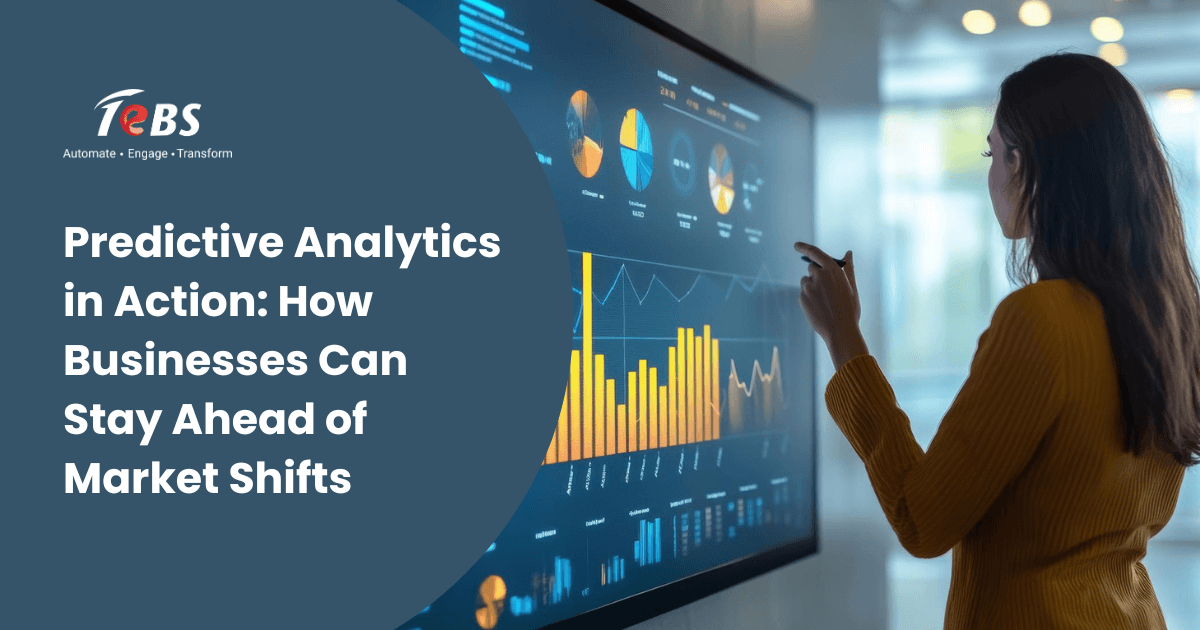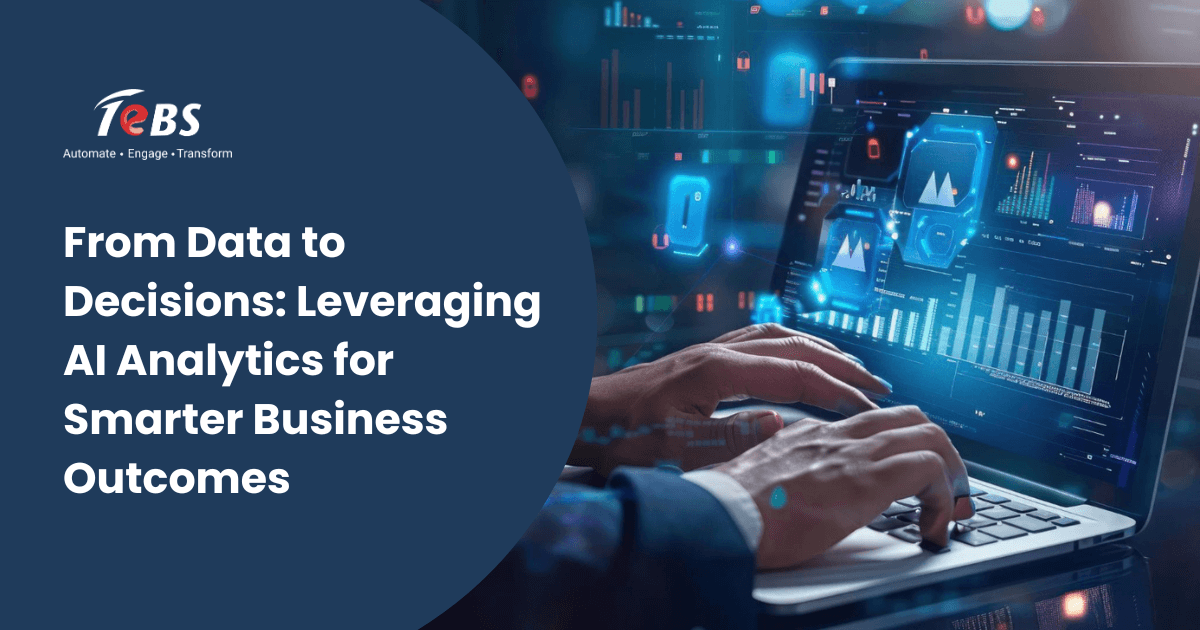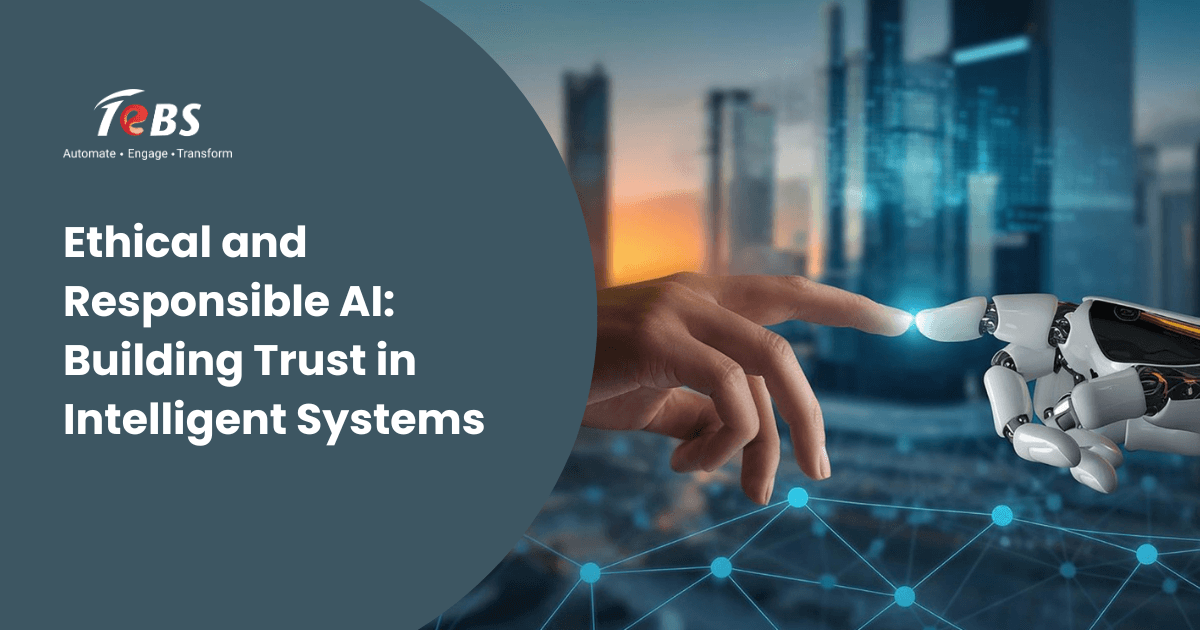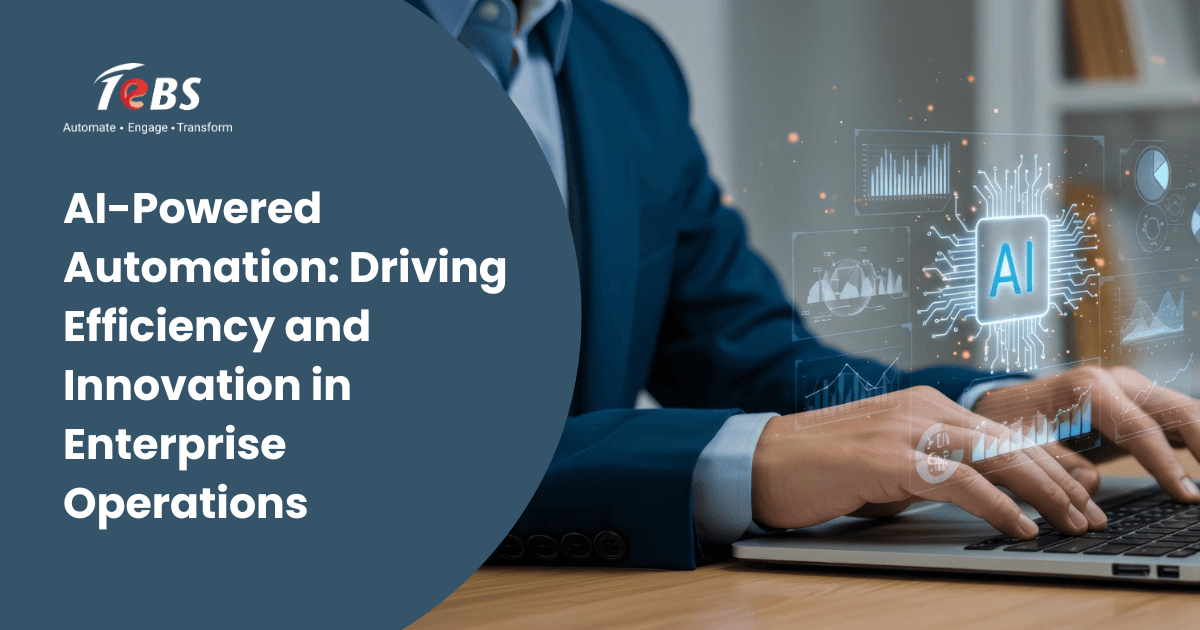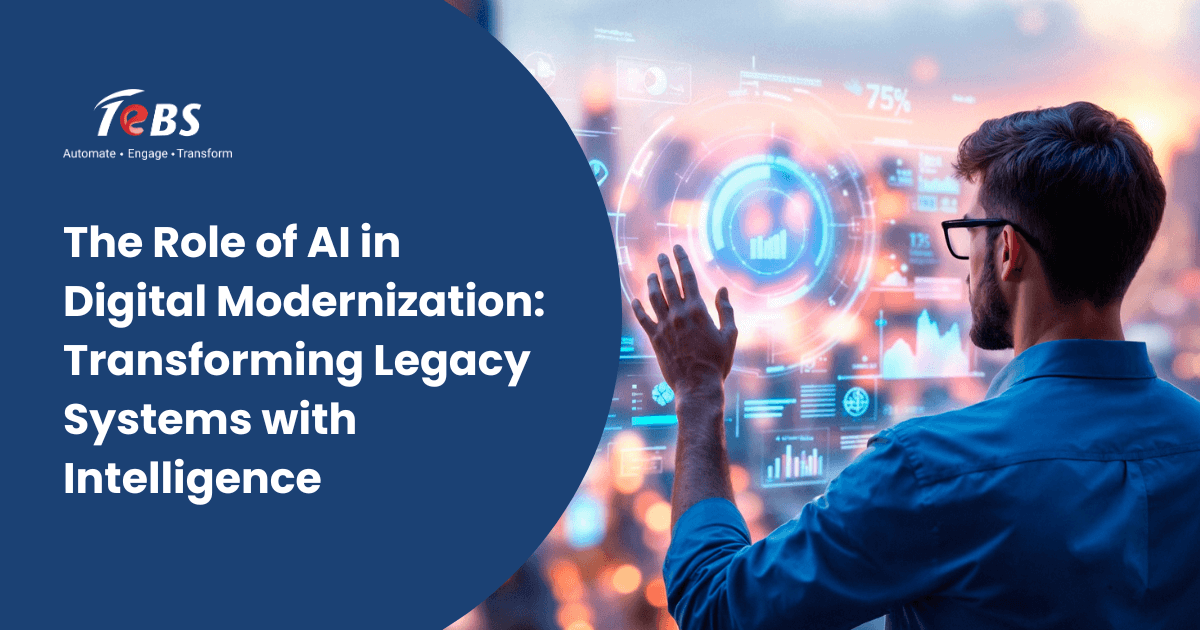Summary
Predictive analytics combines data, AI services, and machine learning to help businesses anticipate market changes, reduce risks, and make smarter decisions. By leveraging AI-powered tools, organizations can forecast trends, optimize resources, and stay competitive in a rapidly shifting business landscape. This blog explores how predictive analytics works, its benefits across industries, and why integrating AI services is essential for future-ready enterprises.Introduction
As organizations face increasingly volatile markets, leveraging AI-powered services and data-driven insights to anticipate change has become essential. Predictive analytics, a sophisticated approach to analyzing historical and real-time data, empowers businesses to make proactive decisions rather than reactive ones. By forecasting trends, optimizing operations, and enabling predictive decision-making, enterprises can remain competitive and evolve into future-ready organizations.From Descriptive to Predictive: The Evolution of Analytics
Analytics has undergone significant transformation over the past decades. Initially, businesses relied on descriptive analytics to understand past performance. Descriptive analytics focuses on summarizing historical data to answer questions like, “What happened?” or “How did sales perform last quarter?” Tools such as dashboards, reports, and data visualizations were central to this stage.
As the volume and complexity of data grew, predictive analytics emerged, shifting the focus from past performance to forecasting future outcomes. Predictive analytics leverages advanced statistical models and AI-driven algorithms to answer questions like, “What is likely to happen next?” and “Which factors influence future outcomes?” This evolution allows organizations to anticipate market shifts, optimize resources, and make more informed decisions.
AI data analytics services and business intelligence play a pivotal role in enabling this analytics evolution.
The next stage, prescriptive analytics, goes even further by recommending actionable strategies to maximize outcomes. Prescriptive analytics combines insights from predictive models with business rules and optimization algorithms, enabling decision-makers to choose the best course of action in complex scenarios.
For a deeper understanding of AI-powered analytics and how it’s transforming business, check out our blog on AI Analytics: What It Is, Why It Matters, and Use Cases.
How Predictive Analytics Works: Data, AI Models, Forecasting
Predictive analytics is built on a foundation of high-quality data. Data from internal sources such as CRM systems, ERP platforms, and sales records, as well as external sources like market trends, social media, and economic indicators, are collected and cleaned. This ensures accuracy and consistency, which are critical for reliable predictions.
For deeper insights on how data infrastructure supports prediction accuracy, explore our blog on AI-Driven Data Management Services.
Once data is prepared, AI and machine learning models are applied to identify patterns, correlations, and trends. Techniques such as regression analysis, decision trees, neural networks, and time-series forecasting help predict outcomes based on historical and real-time data. Forecasting with AI allows businesses to anticipate customer behavior, market demand, operational risks, and other key variables with a high degree of confidence.
For example, a retail chain can use predictive analytics to forecast seasonal product demand, optimize inventory, and prevent stockouts. Similarly, logistics companies can predict shipment delays or bottlenecks, while financial institutions can forecast credit risk or fraud likelihood. By combining statistical models with AI capabilities, predictive analytics transforms raw data into actionable insights.
By combining statistical models with AI capabilities, predictive analytics transforms raw data into actionable insights through AI automation of predictive workflows.
Business Applications of Predictive Analytics
Predictive analytics has practical applications across multiple industries, driving efficiency, revenue growth, and competitive advantage.Retail
Retailers can use predictive analytics to optimize inventory, improve pricing strategies, and enhance customer engagement. By analyzing purchase history, browsing patterns, and social media trends, businesses can forecast demand for products and tailor marketing campaigns to individual customer preferences. Predictive decision-making enables retailers to offer personalized promotions, reduce waste, and increase profitability.Healthcare
In healthcare, predictive analytics is revolutionizing patient care and operational efficiency. Hospitals can predict patient admissions, optimize staffing, and manage resources more effectively. Predictive models can also identify patients at risk of chronic diseases, enabling early interventions and personalized treatment plans. This proactive approach not only improves patient outcomes but also reduces operational costs.Finance
Financial institutions leverage predictive analytics for risk management, fraud detection, and investment forecasting. By analyzing transaction patterns, credit histories, and market data, banks and investment firms can anticipate potential risks and make informed decisions. Forecasting with AI helps institutions optimize loan approvals, prevent fraudulent activities, and maximize portfolio returns.Logistics
Logistics and supply chain companies use predictive analytics to enhance route planning, demand forecasting, and inventory management. Predictive models can identify potential delays, optimize delivery schedules, and reduce fuel costs. By analyzing historical shipment data and external factors such as weather or traffic patterns, logistics providers can deliver goods more efficiently and improve customer satisfaction.
For example, TeBS helped enhance search and prediction efficiency for a logistics client through an AI-powered document processing solution.
Detailed Table: Descriptive vs Predictive vs Prescriptive Analytics
| Type of Analytics | Focus | Example Use | Key Techniques | Outcome | Decision Approach |
| Descriptive | Past data insights | Sales reports, historical trends | Data aggregation, reporting, dashboards | Understand what happened, identify trends | Reactive |
| Predictive | Forecasting future | Demand prediction, risk assessment, customer churn forecasting | Regression analysis, time-series forecasting, machine learning models | Anticipate outcomes, detect patterns | Proactive |
| Prescriptive | Recommended actions | Pricing optimization, supply chain adjustments, marketing strategies | Optimization algorithms, simulation, decision rules | Recommend best actions, optimize results | Prescriptive / Decision-focused |
This table illustrates how businesses evolve from understanding historical data to forecasting future outcomes and ultimately implementing optimized strategies for superior results.
According to Gartner’s 10 Strategic Data and Analytics Predictions Through 2028, the role of data-driven foresight will be a central driver of digital transformation and competitive advantage.
Benefits of Predictive Analytics
- Anticipating Change: By forecasting market trends and customer behavior, organizations can prepare for shifts in demand, competition, or regulatory environments.
- Reducing Risks: Predictive models help identify potential operational, financial, or market risks, allowing businesses to mitigate them proactively.
- Seizing Opportunities: By identifying emerging trends and untapped markets, predictive analytics enables enterprises to make data-driven investments and strategic moves.
- Optimizing Operations: From inventory management to workforce planning, predictive insights streamline operations and improve efficiency.
- Enhancing Customer Experiences: Predictive analytics supports personalized marketing, customer retention strategies, and proactive service delivery.
Collectively, these advantages allow organizations to evolve into future-ready enterprises, prepared to respond to challenges and opportunities with agility and confidence.
According to Microsoft, Predictive Analytics in Action- How Businesses Can Stay Ahead of Market Shifts
Conclusion: Staying Competitive with Predictive Analytics
Businesses that embrace predictive analytics gain a strategic advantage by anticipating market shifts, mitigating risks, and seizing opportunities. By integrating data, AI models, and forecasting techniques into decision-making processes, organizations can evolve into future-ready enterprises capable of adapting quickly to changing market conditions.
Organizations looking to harness the power of predictive analytics for smarter, data-driven decisions can connect with experts at [email protected] to explore tailored solutions that drive growth, efficiency, and competitiveness.
FAQs
1. What is predictive analytics and how does it work?
Predictive analytics uses historical and real-time data, AI, and statistical models to forecast future outcomes. By identifying patterns and correlations in data, predictive analytics enables businesses to anticipate trends, risks, and opportunities, supporting informed decision-making.
2. How does predictive analytics differ from descriptive analytics?
Descriptive analytics focuses on understanding past data and trends, answering questions like “What happened?” Predictive analytics, on the other hand, forecasts future outcomes and answers questions like “What is likely to happen next?” Prescriptive analytics goes a step further by recommending actions based on predictions.
3. What industries benefit most from predictive analytics?
Industries such as retail, healthcare, finance, and logistics benefit significantly from predictive analytics. It helps retailers forecast demand, healthcare providers manage patient care, financial institutions assess risk, and logistics companies optimize supply chains.
4. What tools or platforms are used for predictive analytics?
Popular tools include Microsoft Azure Machine Learning, IBM SPSS, SAS Predictive Analytics, Tableau, and Python or R-based machine learning libraries. Many platforms also integrate AI capabilities for enhanced forecasting.
5. How does AI enhance predictive analytics?
AI enhances predictive analytics by improving the accuracy and speed of forecasts. Machine learning models can detect complex patterns in large datasets, adapt to changing conditions, and provide actionable insights for predictive decision-making.
6. Can SMEs use predictive analytics effectively?
Yes. Even small and medium-sized enterprises can leverage predictive analytics to optimize operations, forecast sales, and enhance customer experiences. Cloud-based analytics platforms and AI tools have made predictive analytics more accessible and affordable for SMEs.

